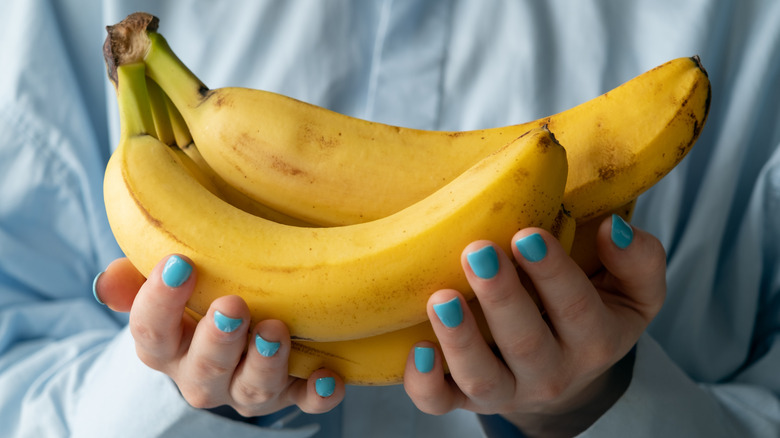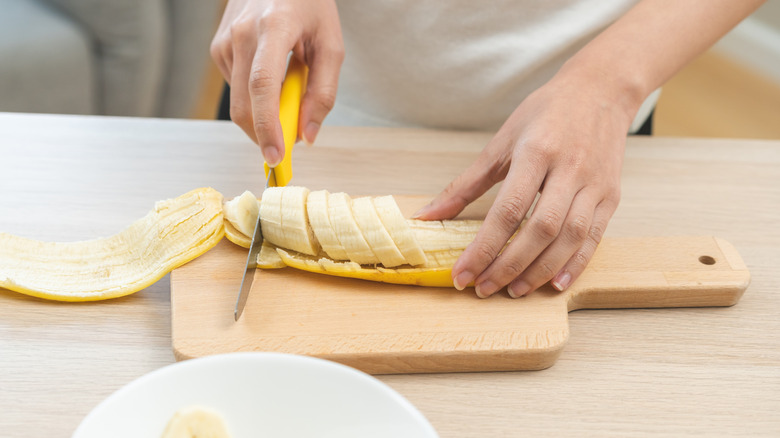The Big Mistake You Might Be Making When Storing Your Bananas
We've all been there. Dreaming of morning smoothie recipes and yogurt parfait, you bring home a bunch of bananas and add them to your fruit bowl — only to find them speckled with brown spots in what seems like record time. It turns out that your well-intentioned habit of tossing them in with the apples, pears, and avocados may be what's accelerating their demise.
These fruits (as well as bananas themselves) release ethylene gas, a natural plant hormone that triggers ripening. So, when you combine all of these fruits together, the ethylene speeds up the ripening process for anything in close proximity. Ideally, bananas should last about two to six days at room temperature before they start softening, but storing them near other ethylene-producing fruits can cut that time in half.
To slow the ripening process, keep your bananas away from other produce, and try wrapping the stems in plastic to trap ethylene gas at its source. Another simple fix for slowing the release of your bananas' gas is hanging them on a banana holder, which will also reduce the bruising that occurs when they rest on top of each other. These small changes can buy you more time before your bananas cross the point of no return. Fortunately, if you do have overripe bananas, you can always add them to your favorite banana bread recipe. Other ways you can use overripe bananas include dishes like banana ice cream and banana pudding.
Other ways to extend your bananas' shelf life
If you want to stretch your bananas' longevity even further, there are a few other tricks worth knowing. First, while sliced bananas are convenient, they don't store well. They'll start browning within hours due to oxidation, but squeezing lemon juice over the slices can help lower their pH levels, slowing discoloration. Store them in an airtight container or wrapped in plastic wrap in the fridge, where they'll stay fresh for about three to four days.
For whole bananas, refrigeration can be a game-changer, but the timing is crucial. If you pop them in too soon, the cold can halt the ripening process entirely and cause an issue called "chilling injury," which leaves the fruit mealy and unappetizing. Let them fully ripen at room temperature first, then transfer them to the fridge, where they'll stay fresh for an extra couple of days. The peel may darken, but the inside will remain perfectly good to eat. For optimal freshness, keep bananas at around 54 degrees Fahrenheit — not too cold, not too warm.
The best long-term storage method, though, has to be freezing. Peel and slice ripe bananas, flash-freeze them in a single layer on a baking sheet for about two hours, then transfer them to a freezer-safe bag. This way, the banana slices won't freeze together and will be easier to remove from the bag. Frozen banana slices should last for about six to eight months and can be used for smoothies, banana bread, or even naturally sweet frozen treats like popsicles. With a little strategic storage, you'll never have to feel betrayed by a rapidly browning banana again.

